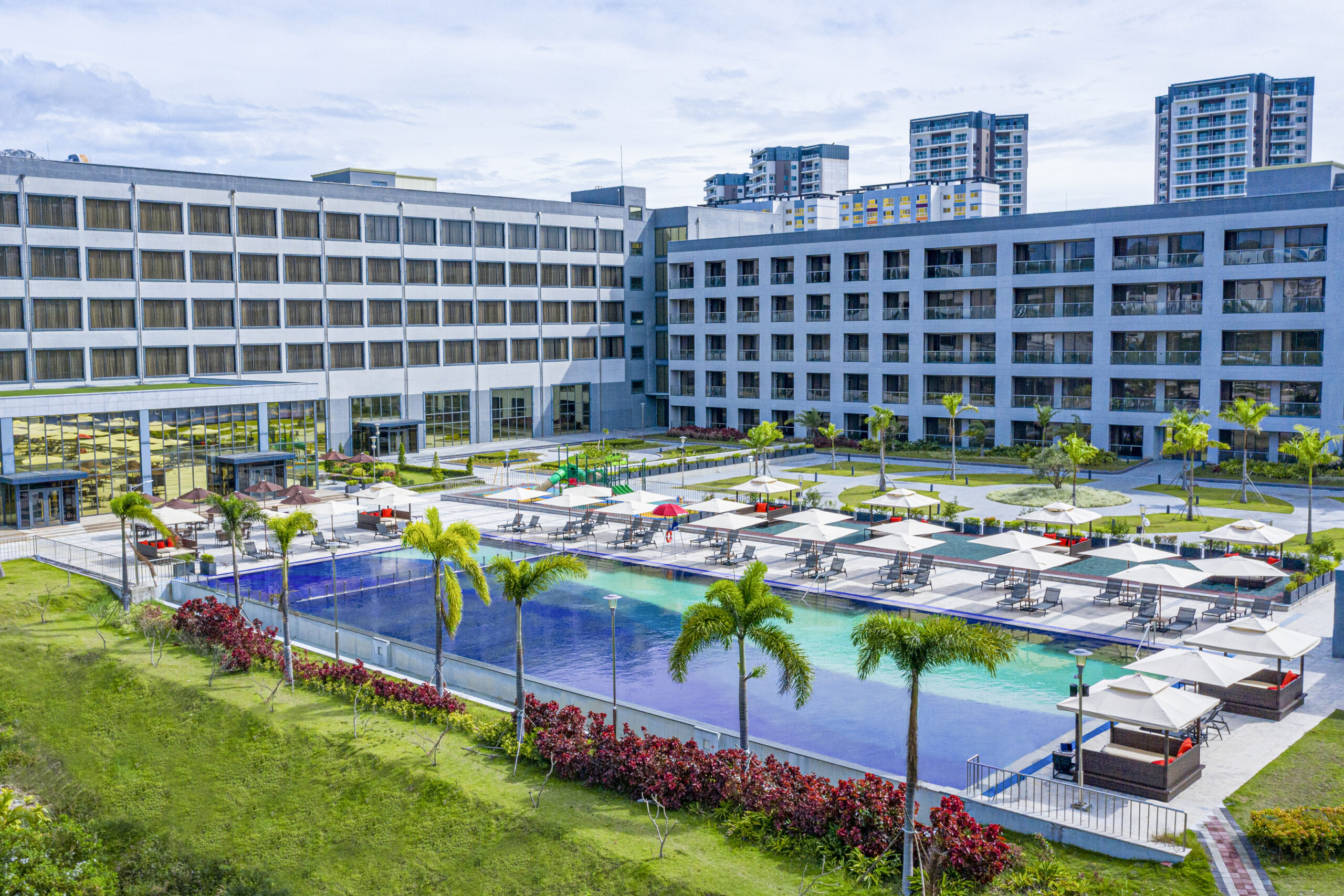Every year, the seven indigenous peoples of Bukidnon take to the streets in a noble display of their iridescent heritage
The air was brisk that morning in late March, and the glow of daybreak fell like molten bronze. In the middle of the street, a pond of colors materialized. Shimmery greens and muted browns. Metallic sheen and a calm orange. Blues and blacks. But mostly brilliant reds. Today was Kaamulan, which means Bukidnon’s seven noble tribes will make the streets of Malaybalay throb with life.
Regarded by many as the “most authentic” festival in the country, Kaamulan was birthed in the 1970s by local leaders – some of them indigenous chieftains – who deemed Bukidnon’s rich indigenous culture worthy of celebration. From the Binukid word “amul” which means “to gather,” the festival initially only involved ethnic groups residing in the provincial capital of Malaybalay, holding street performances of their treasured songs and dances. Later on, all seven hill tribes – the Bukidnon, Higaonon, Talaandig, Manobo, Matigsalug, Tigwahanon and Umayamnon – who were the original inhabitants of the province joined in on the festivities. Since then, the Kaamulan Festival had come to be known as a showcase of the unraveled and diverse heritage of Bukidnon.
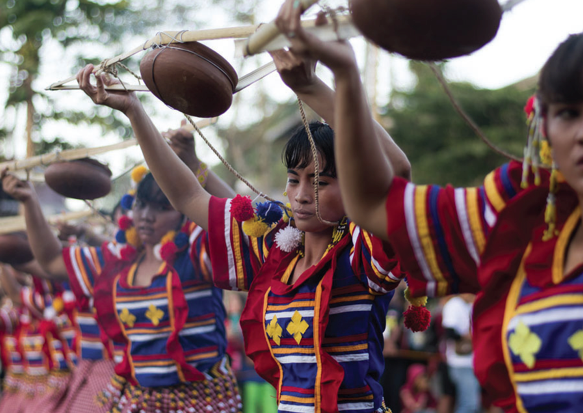
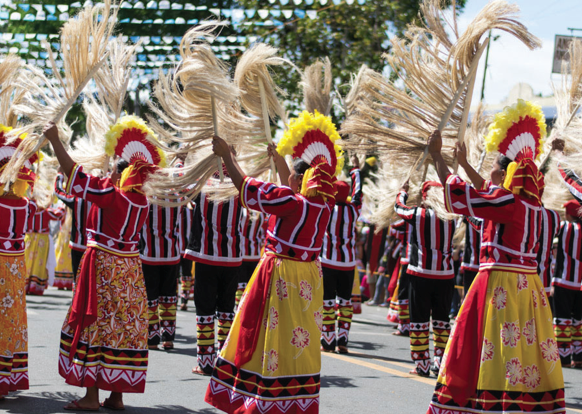
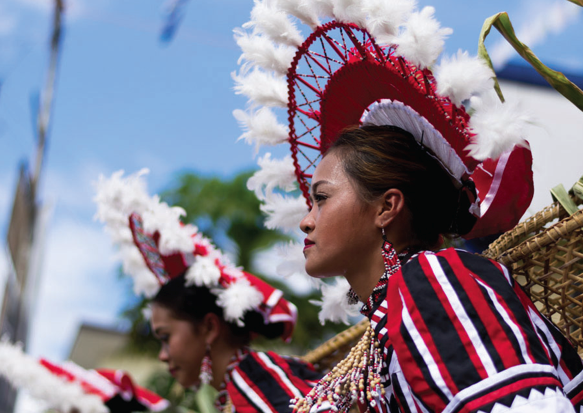
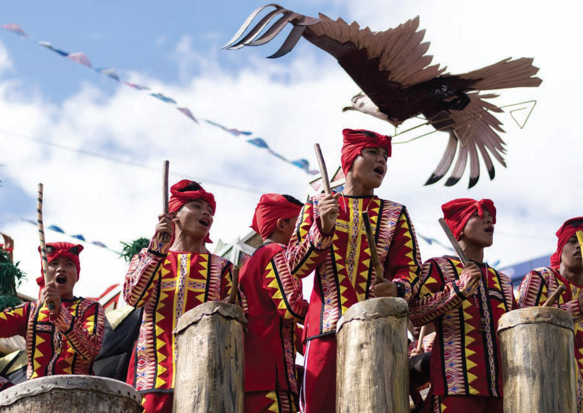
The celebration is usually held in March, culminating in the much-anticipated Civic Parade. The main event is participated by around half of Bukidnon’s 20 municipalities and two component cities, with the other half competing the following year.
Today was the main event, and I was ready for it.
Bleeding torrent
I lingered on the sidelines for a moment, taking in the dazzling garbs of the contingents. Truth be told, I didn’t know what to expect.
I learned long ago to come to a new place without preconceived notions, to arrive with nothing but the barest necessities. This way, I’ve found, it’ll be easier to be amazed. But if last night’s Piniliyapan – an evening of cultural performances – was any indication, I’d be dumb not to brace myself.
The arresting interpretation of the epic Ulaging came to mind. I recalled how my jaw invariably dropped at the otherworldly voices of the Kalayag choir; and how I was brought to tears by a lady who filled the open theater – sans a microphone, mind you – with chants that rung fiercely of dignity and pride. I remember looking at her face and seeing what it truly meant to be regal. Then, at the end of the evening, everyone stood up for an indigenous dance party. I was whisked to the middle of the hall, trying so hard to follow the steps – it was way harder than it looked.
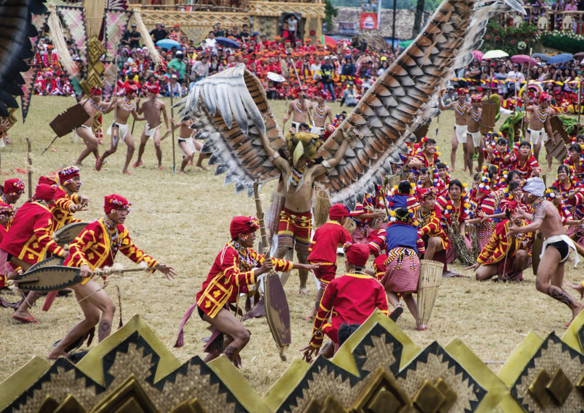
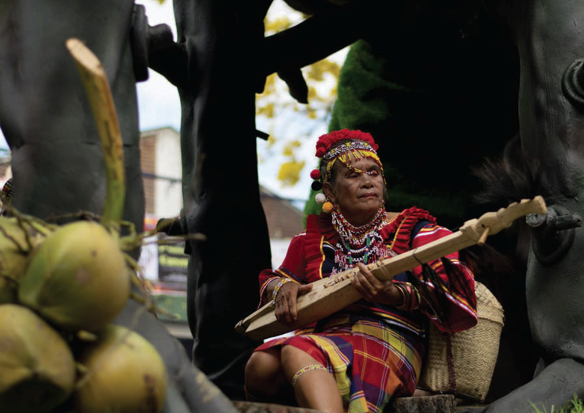
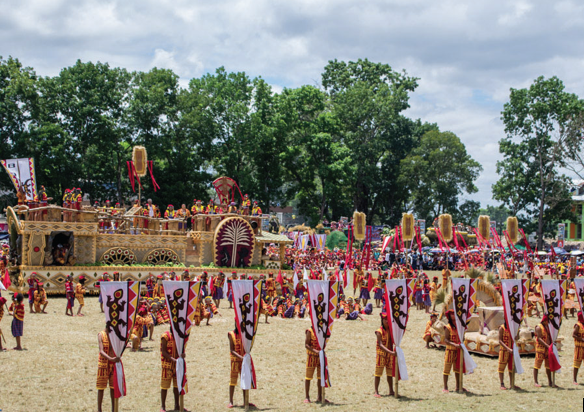
The crack of fireworks jilted me from my thoughts. The parade was about to begin. I backed further down the street for a better vantage. The robust drumbeats followed me all the way, and I waited under a pair of blooming golden trumpet trees.
Moments later, the pond of colors from earlier bled into a torrent, into a sea of blazing reds and assorted hues. The performances were elaborate – the music enthralling. Each has a storyline. A series of rituals and dances.
Showcase of strength
One contingent told the story of how a giant banog (Philippine hawk) and a band of baylans (healers) healed a datu’s (chieftain) heir after being bitten by a bunsalagan (lake spirit). Another, featured Laaw – a towering dark spirit that gives favor to the people.
Sacred animals like horses, monkeys, and birds also featured heavily on the dances. Courtships, weddings, and everyday life like fishing, planting and harvesting are also common themes. Also prominent are the war dances, showcasing the strength of the tribes.
The performances are carried through by people of ages. The tribal and government leaders are usually in front of their respective contingents. Before, the participants were just from the indigenous groups, but soon, other residents started joining in, and the tribes welcomed them with open arms.
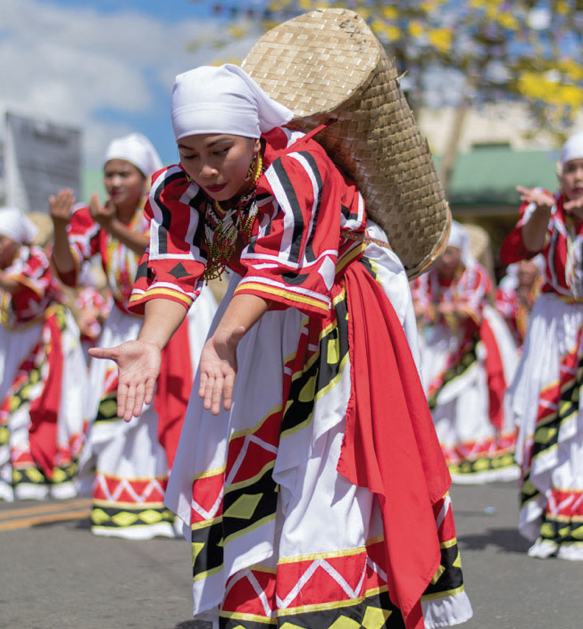
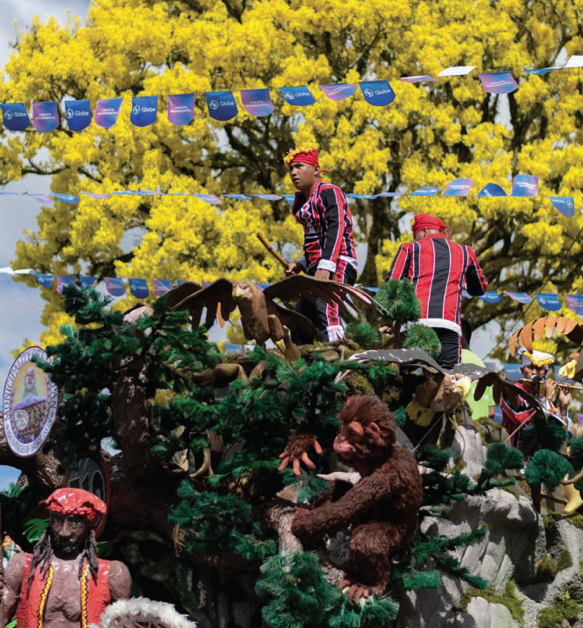
With all the colors and grandeur of the street parade, it’s easy to forget that what’s being performed is derived from actual rituals sacred to the tribes. Of course, measures are in place to keep it unadulterated. Both the participants and choreographers must seek permission to perform, with the latter required to first show the routine for approval. Even before the parade starts, a pamuhat (ritual) is conducted in which tribal elders offer chickens and coins to the spirits and Apu Magbabaya (God). Rituals like this are very important to the tribes.
An enviable sense of self
To further expand cultural consciousness, this brilliant and largely untarnished showcase of traditions has also become a competition. Three titles are up for grabs: Best Float, Best Street Dance, and Best Ground Presentation. The floats double as bandstands, accompanying the street parade to the capitol grounds where contingents hold a much more extensive performance.
Back to the streets, I was so taken by all of it that I hadn’t

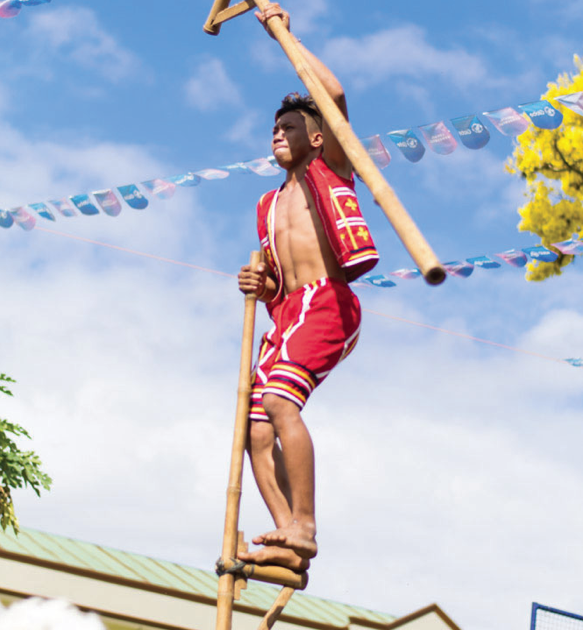
noticed I was already at the tail of the parade. As the representatives of the City of Malaybalay performed their routine, I thought of what my friend and fellow writer Claire said: because they are mostly unconquered by foreign forces, indigenous people have a strong sense of identity. Unlike most Filipinos who are torn between cultures and biases, our tribal brethren are more anchored, more here.
And it’s enviable, that sense of self.
It’s easy to dismiss events like Kaamulan as gaudy, but once you witness first-hand the pride and dignity of the tribes, see for your own eyes how sure and unfazed they are of themselves, you’ll find that even if you come with expectations, it’s not very hard to be amazed.
By CELINE MURILLO









